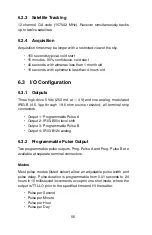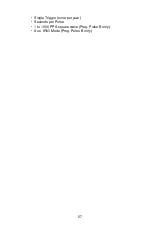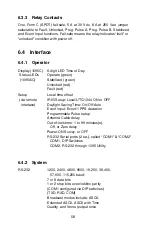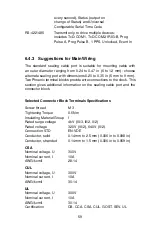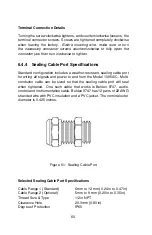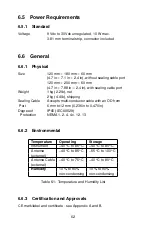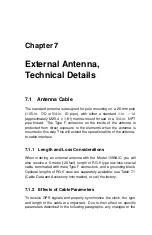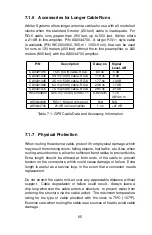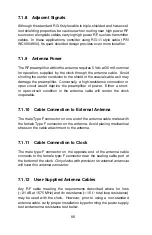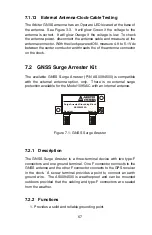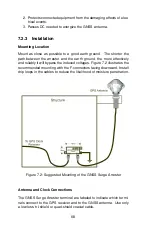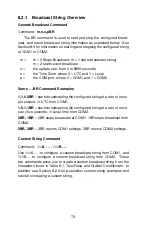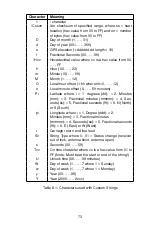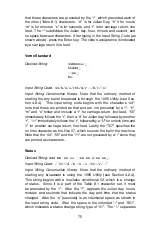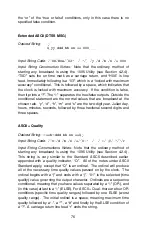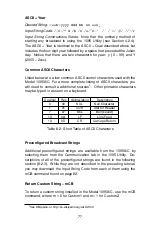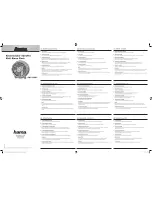
Chapter 8
Serial Command
Reference
8.1
Introduction
The Model 1095A/C has two RS-232 ports and one RS-485 port, with a
set of serial commands for configuring and controlling clock operation.
While many users will choose to control clock operation with the 1095
Utility software (see Chapter 4), others may wish to develop their
own interface program. Consult this appendix for information on how
communicate with and configure the Model 1095A/C without using the
1095 Utility.
COM1 settings are controlled mechanically by the 8-position dip
switch in the center of the main board; settings are indicated in Table 2.1.
COM2 settings are controlled by using the 1095 Utility Application or
using COM Port Settings as described in Section 8.2.4. The COM1 and
COM2 do not use flow control, and the RS-485 port functions in transmit
only mode.
Use the two serial ports interchangeably for separate functions. You
may wish to interrogate the clock on one port for basic information (i.e to
configure something) and at the same time be able to have the second
serial port broadcasting a specific time code to a meter. Substation
equipment commonly rely on IRIG-B time code, where others may
receive ASCII data through the serial port. Another common serial-port
function is to connect a digital wall display to indicate the time.

